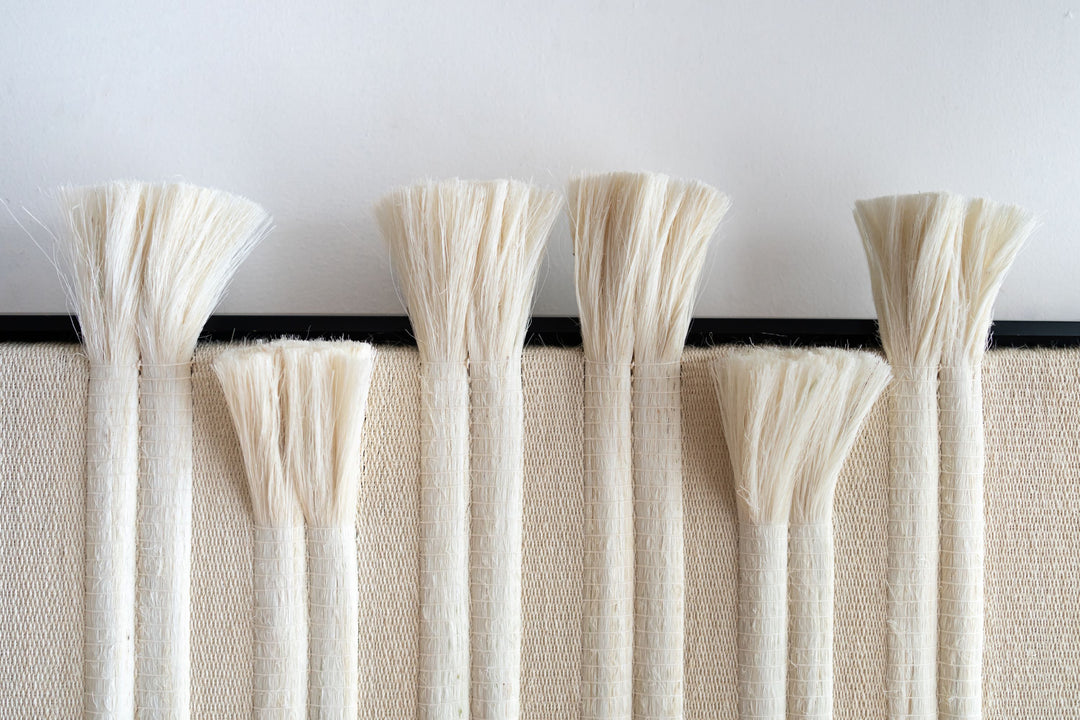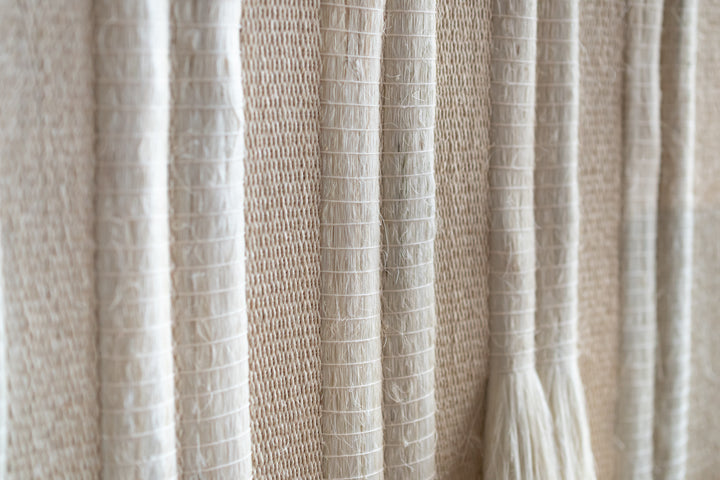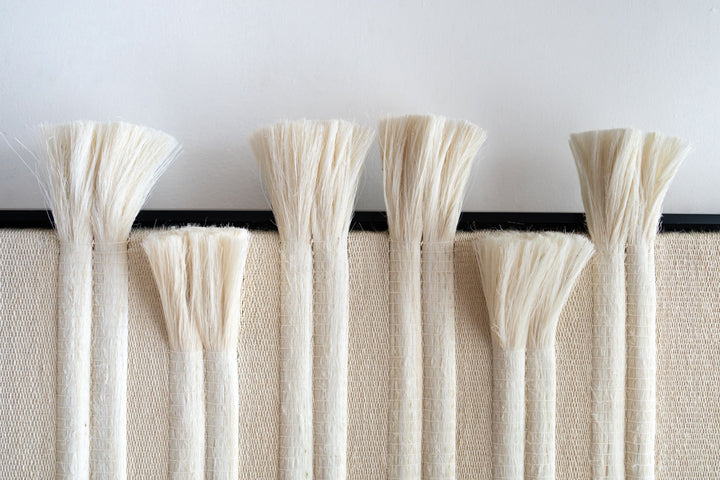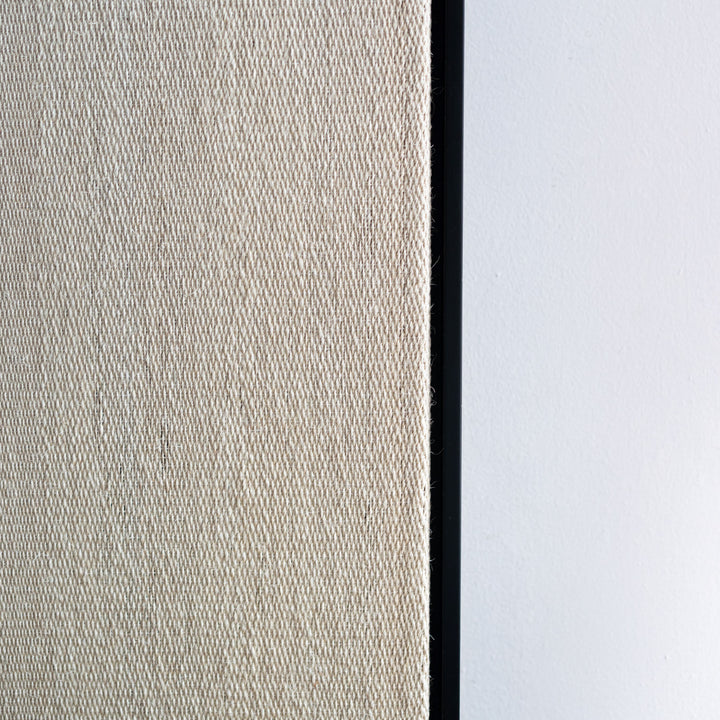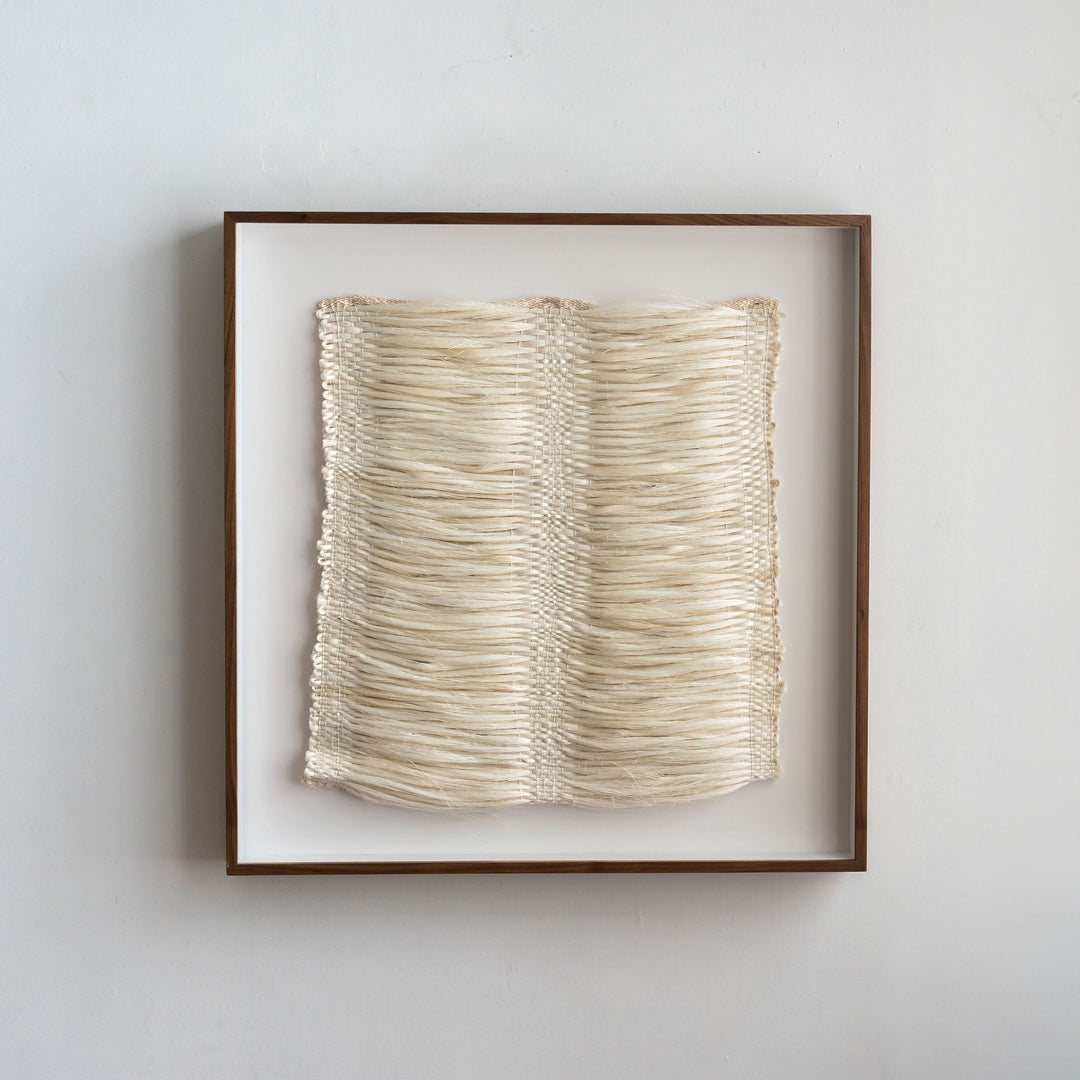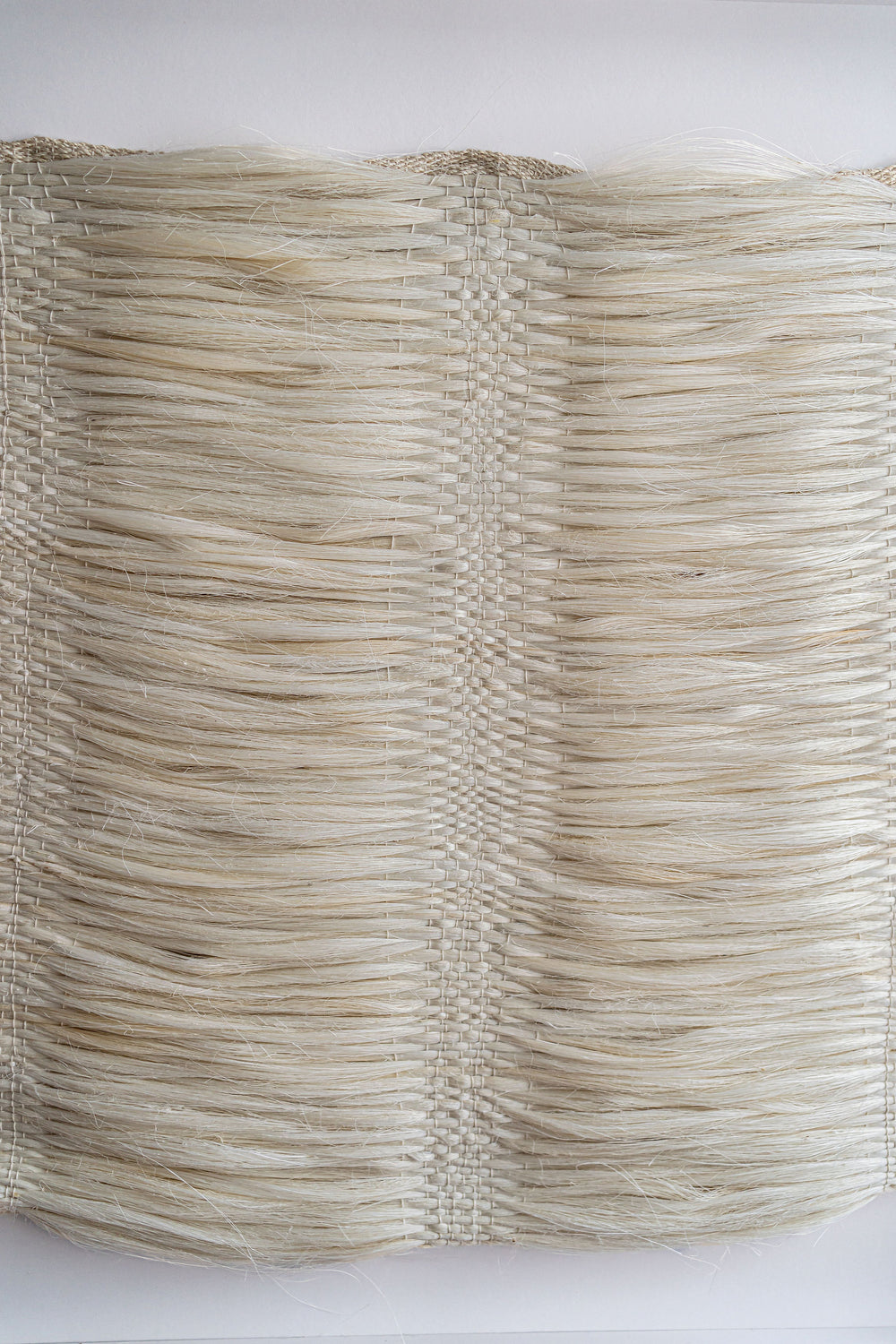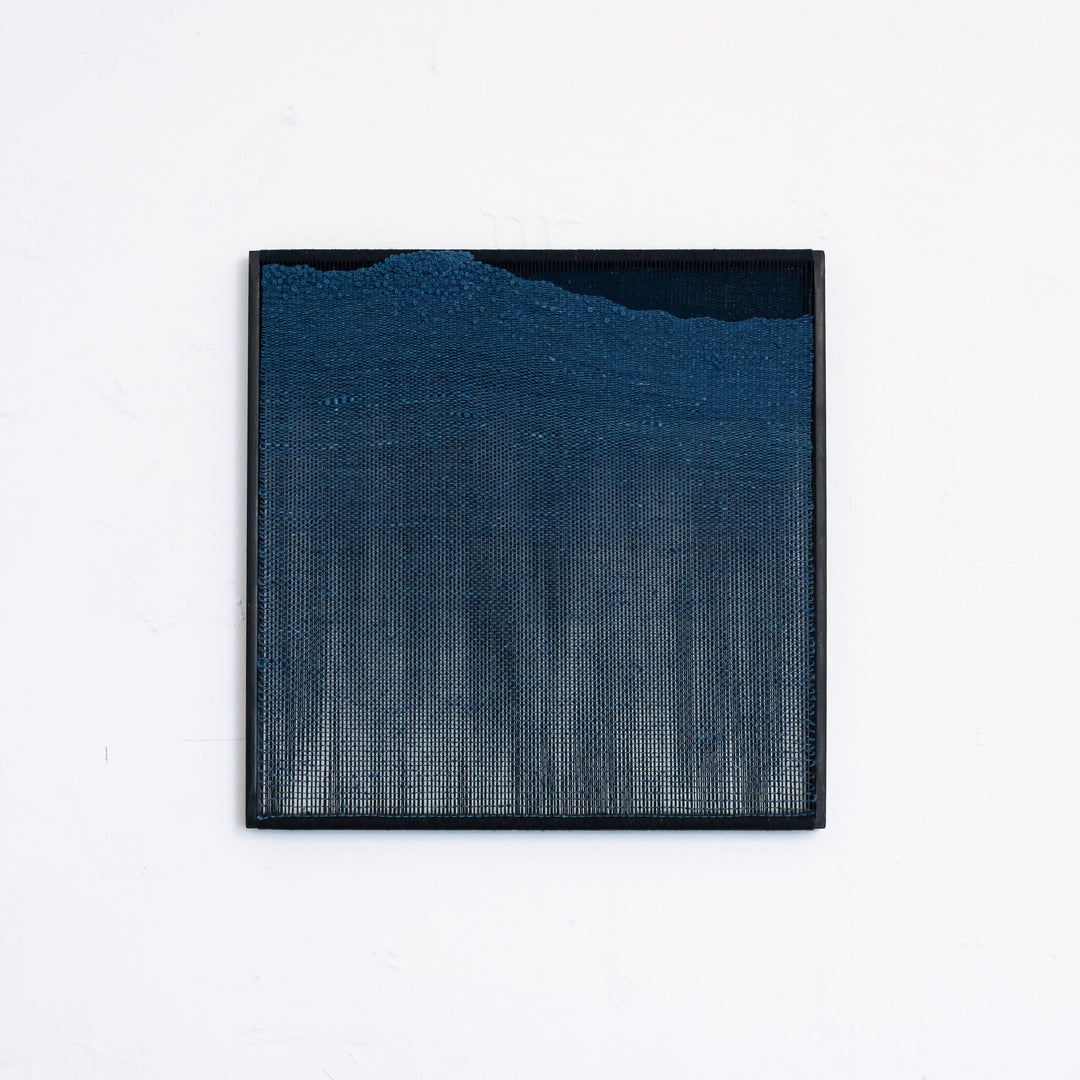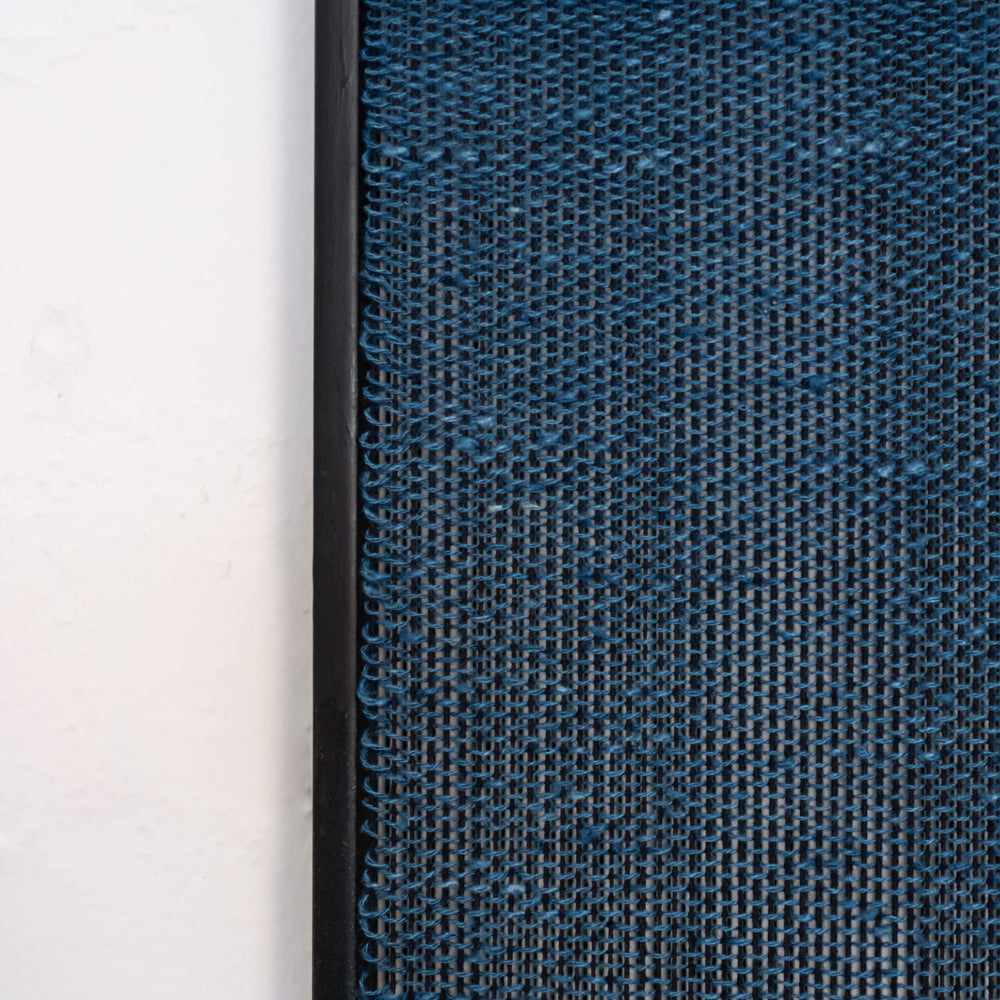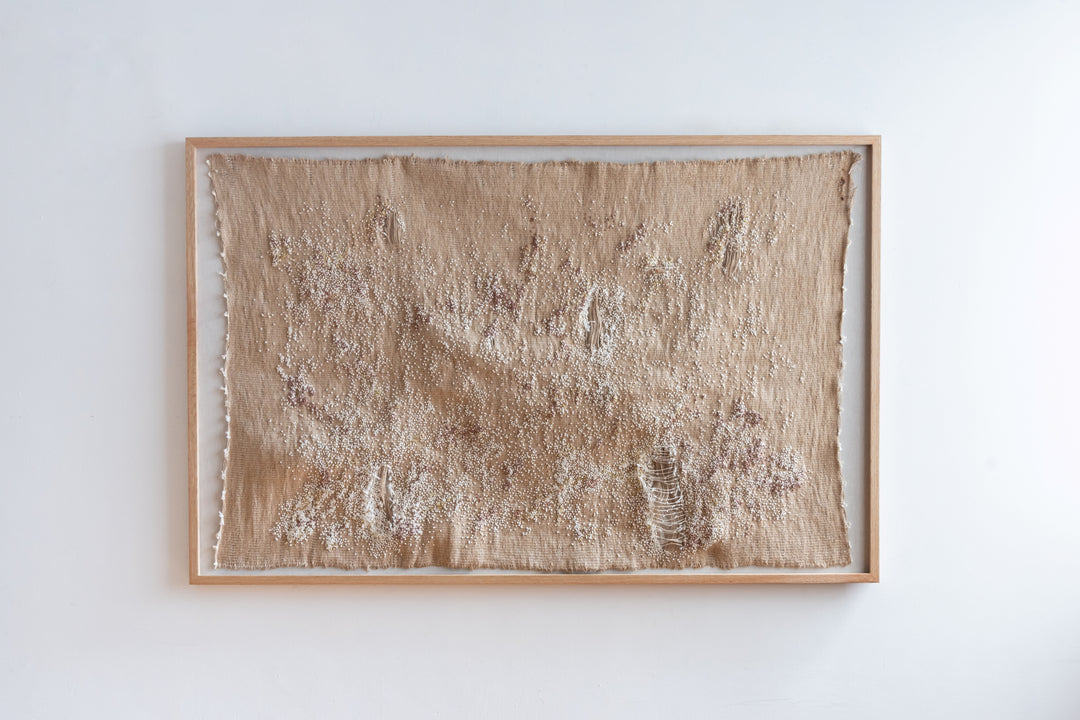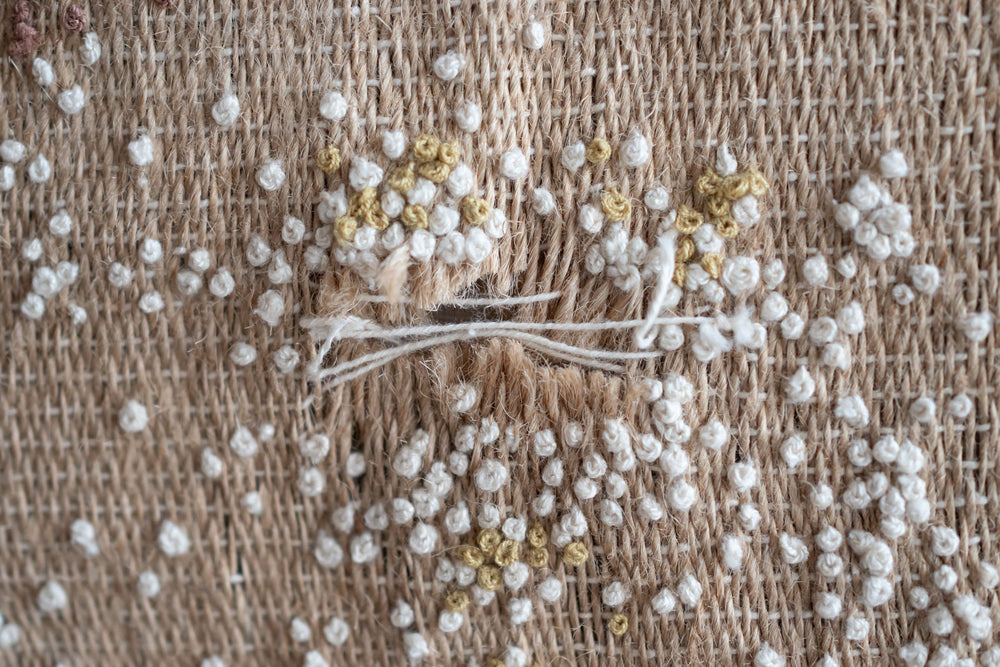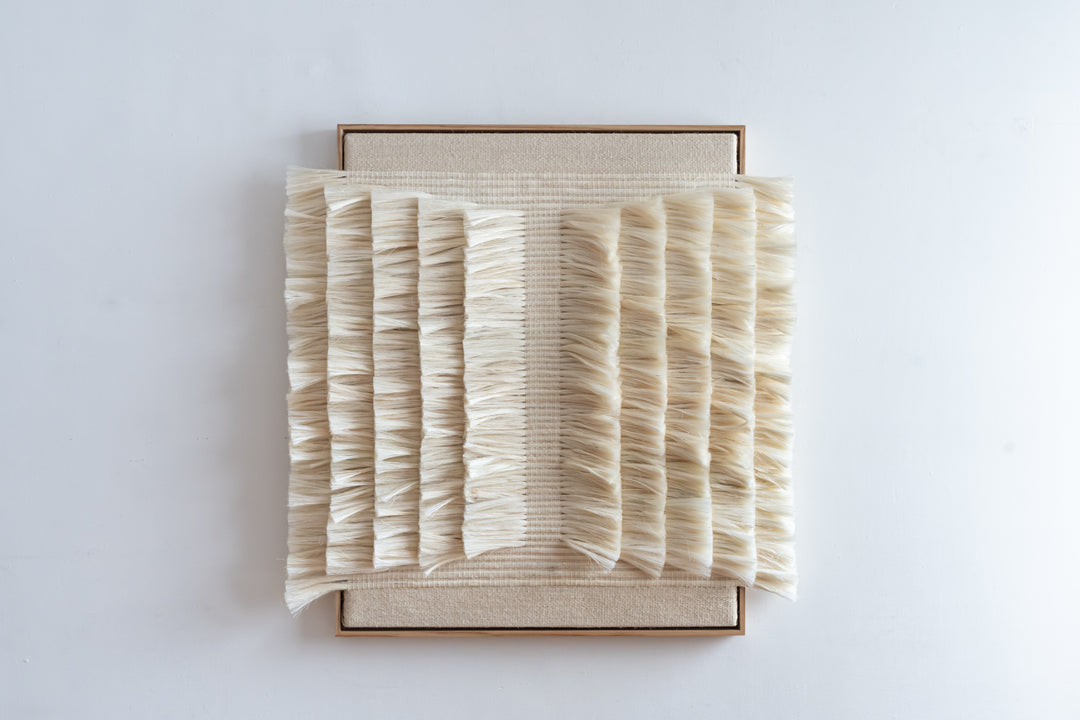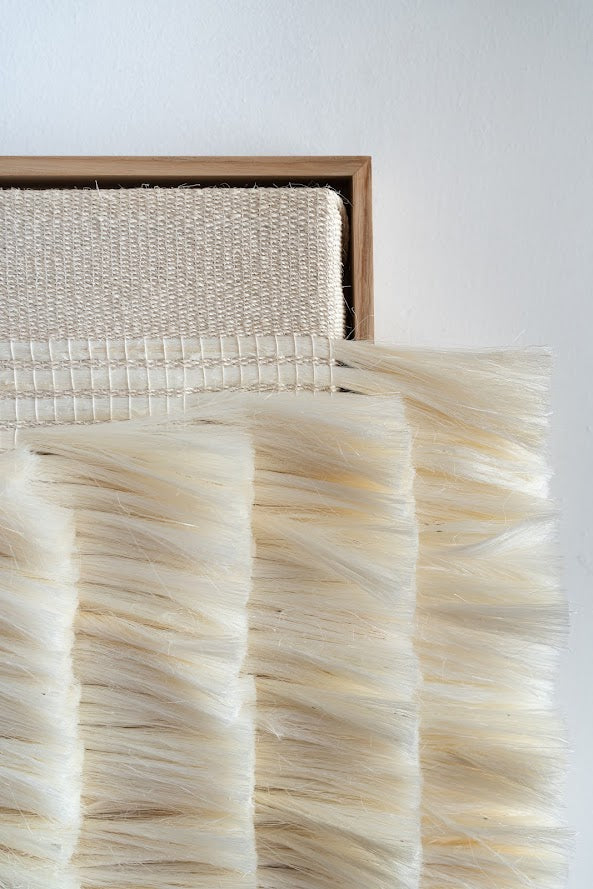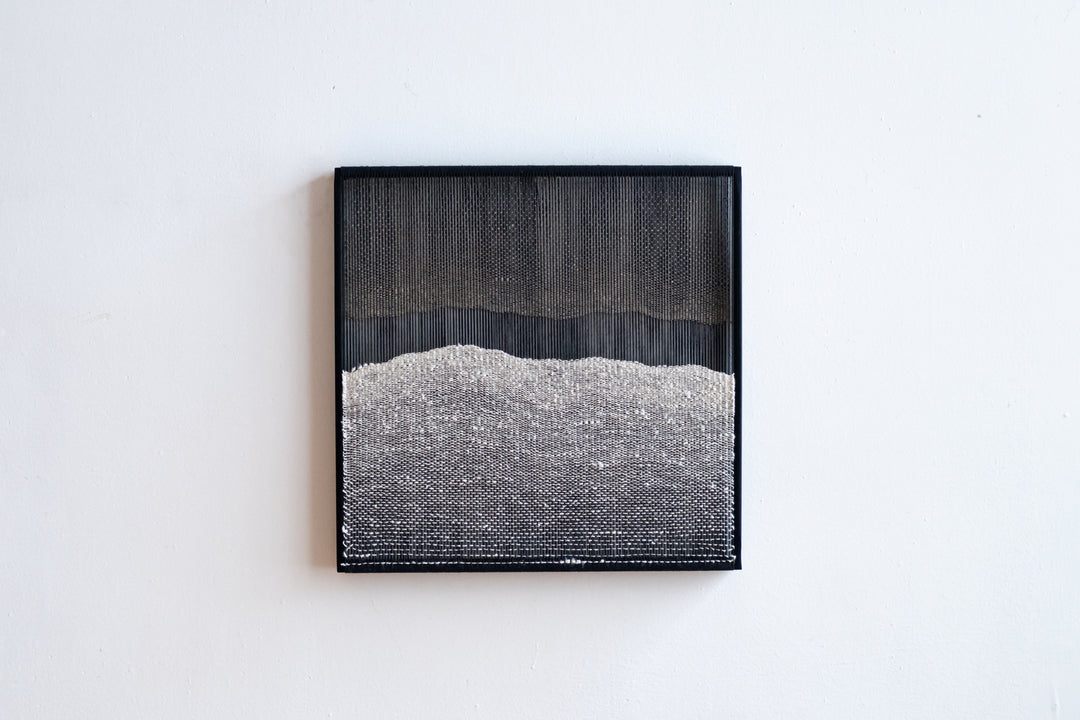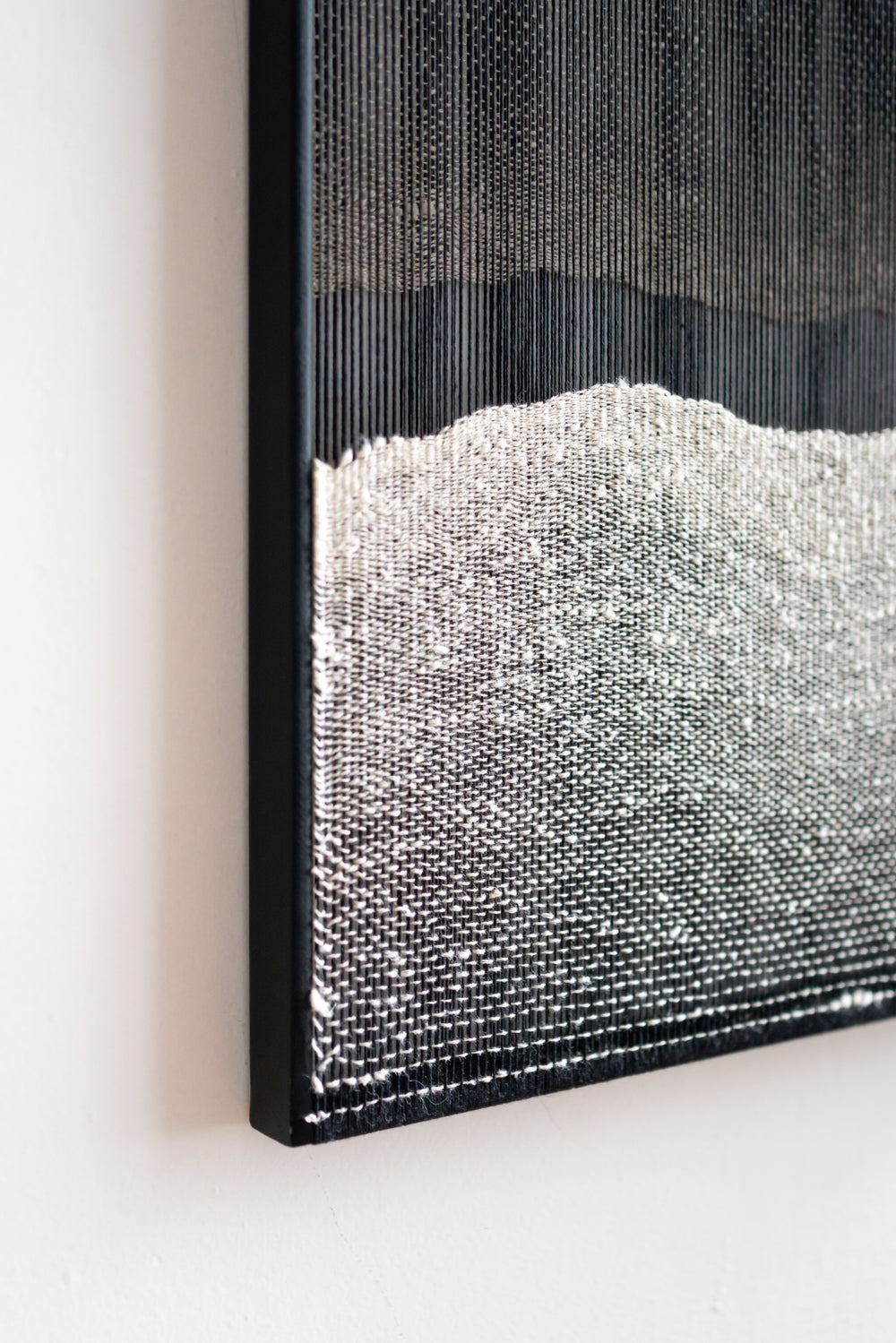RAICES KI 2
Raices KI IV
2024
Handloom wool technique and embroidery
130 x 70 cm
"Raíces KI was born during a transformative period in my life, when I learned the art of pedal loom weaving under the guidance of Don Agapito, a master artisan from San Miguel de Allende.
For months, I worked on a century-old pedal loom, which allowed me to uncover the historical and cultural richness of this ancient technique. Beyond technical lessons, my conversations with Don Agapito inspired me to explore Mexican fibers, recognizing them as carriers of our history and traditions.
In this collection, I aimed to highlight the natural essence of the fibers through symmetrical compositions and by emphasizing the contrast between volume and texture. The idea is to pay tribute to our textile tradition and to the visionaries who have breathed creative life into these materials.
Raíces KI reminds us of the importance of preserving our roots, reconnecting with craftsmanship, and honoring the stories that define us."
Ana Pau Noriega is a Mexican artist living and working in Mexico City. Her beginnings in textile art were marked by travels to different regions of Mexico, where she trained directly with recognized masters of local textile craftsmanship. This contact with traditional techniques nurtured her creative vision and developed her commitment to the preservation and reinterpretation of Mexico's textile cultural heritage.
Her artistic approach is the fruit of a deeply intimate vision, but as each piece develops, she seeks to elevate it to a universal perspective that invites connection and collective reflection. Many of her works are grounded in social research that explores themes such as identity and cultural tradition.
In 2018, she founded KREYÉ, a textile studio dedicated to creating unique pieces that establish a dialogue between art, design and craft. Today, Kreyé is a textile studio where works are created that are developed with heritage and respect for tradition, while celebrating experimentation in the expression of an integral and personal sensibility.
Increasingly, she is evolving her practice towards works whose symbolic significance speaks to us of the different social dynamics of the world around her, and of the passage of time as a fundamental process of transformation and evolution, particularly relevant in our time, when immediacy and pressure push us to resist change. Through her materials, wool and silk, she tells us how emotional wounds are slowly healed, each moment lived contributing to moving us forward. The pieces, interwoven with tension and fluidity, symbolize the need to let time pass with compassion, recognizing both the traces it leaves and the learning it brings. It invites us to reflect on change as an essential, non-disruptive element in the natural process of time, enabling us to evolve towards a fuller version of ourselves.
All right reserved


